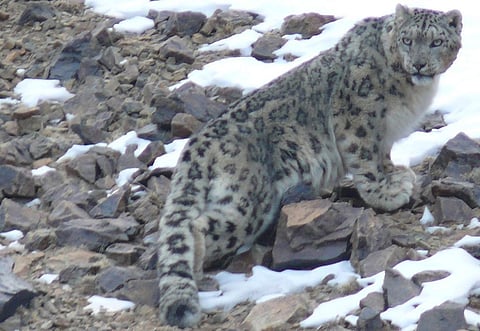

A new study by Dehradun-based Wildlife Institute of India (WII) has revealed that the upper reaches of the Himalayas are warming, something that will put local flora and fauna at tremendous risk.
The study was begun in 2016 and is being monitored by the National Action Plan on Climate Change. It was conducted in the basin of the Bhagirathi river near Gaumukh in Uttarakhand. The study region is located at an altitude between 3500-4500 metres. At 4,500 metres, the maximum temperature touches 5 degrees Celsius, while the minimum plunges to -14. At 3,500 metres, the maximum temperature is 10 degrees Celsius, while the minimum is around -2.5 degrees Celsius.
The study has revealed that there has been a rise of at least 0.5 degrees Celsius in the temperature of the area, accompanied by an almost 10 per cent variation in humidity levels.
According to WII scientist S Sathyakumar who led the study, the temperature variation is affecting plants and consequently, animals, in the region. “Flowering patterns and budding of leaves are now happening in May instead of June. Rains are happening in late September which is unusual since this is the autumn season. In response to the changed temperatures in alpine meadows which are the grazing and hunting sites for the species inhabiting the region, premature budding and flowering happens in plants. This leads to a change in the activities of insects. In response, birds will have to change their patterns. Therefore, the entire cycle of an area changes,” he told the Times of India.
Flora affected include the Himalayan birch, White lily, Tibetan sea buckthorn, Spotted heart orchid, Himalayan fir and Sikkim Rhubarb.
Mammals likely to be affected include the Snow leopard, Musk deer, Kashmir stag and Himalayan mouse hare. “Our researchers have identified that the Himalayan mouse hare, a kind of rodent unique to the alpine area is unable to adapt to the new environment. During snowbound months, it goes inside its burrows under partial hibernation. But now, due to a shift in flowering patterns, their food availability is getting affected which may pose a threat to their survival,” Sathyakumar told the Times of India.
Birds being monitored by the WII include Himalyan snowcock and snow patridge. Among fish, species like Golden mahseer, Snow trout and Gangetic mystus are being monitored.